Creating a smart home on a budget is possible with affordable voice assistants like Amazon Echo Dot or Google Nest Mini. These devices serve as central hubs for controlling smart lighting, thermostats, and other compatible devices. Budget-friendly options include smart bulbs, switches, and plugs for automated lighting control. Thrifty temperature management can be achieved through programmable thermostats and low-cost efficiency measures. For security, consider wireless sensors and DIY kits. Repurpose existing devices and explore DIY projects to maximize savings. Energy-saving smart plugs and cost-effective entertainment upgrades can further enhance your smart home experience. By implementing these strategies, you'll be well on your way to a tech-savvy living space without breaking the bank.
Affordable Voice Assistants
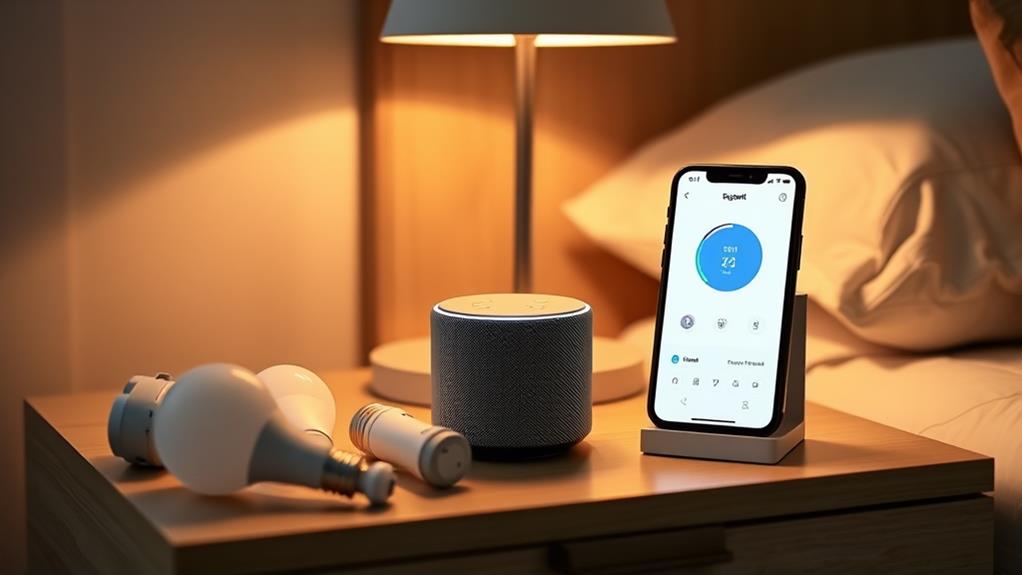
How can you make your home smarter without breaking the bank? One of the most cost-effective ways to start is by incorporating affordable voice assistants into your living space. These devices serve as the central hub for controlling various smart home functions and can be purchased for a fraction of the cost of more extensive home automation systems.
Popular options like Amazon Echo Dot, Google Nest Mini, and Apple HomePod Mini offer impressive functionality at budget-friendly prices. These compact devices can control smart lights, thermostats, and other compatible devices through voice commands. They also provide useful features like weather updates, alarm settings, and music streaming.
To maximize value, look for bundle deals or refurbished models from reputable sellers. Many of these assistants can be found for under $50, making them an excellent entry point into smart home technology. As you become more comfortable with voice control, you can gradually add compatible smart devices to expand your system's capabilities. This approach allows you to build a comprehensive smart home setup over time without a significant upfront investment.
Budget-Friendly Smart Lighting Solutions
Smart lighting solutions offer an excellent next step in creating an affordable smart home ecosystem. These devices can significantly enhance convenience, energy efficiency, and ambiance without breaking the bank.
One cost-effective option is to start with smart bulbs, which can be controlled via smartphone apps or voice assistants. Brands like Wyze and TP-Link offer budget-friendly smart bulbs that provide color-changing capabilities and scheduling features.
For those seeking a more comprehensive solution, consider smart light switches. These devices replace traditional switches and allow control of existing light fixtures. While slightly more expensive upfront, they can be more economical in the long run, especially for rooms with multiple light sources. Kasa and Treatlife offer affordable smart switch options that are compatible with most home setups.
Another budget-friendly approach is to use smart plugs with traditional lamps. This method allows you to control non-smart lighting fixtures remotely and set schedules. Combine these solutions with motion sensors to automate lighting in high-traffic areas, further increasing energy savings.
Thrifty Temperature Control Options
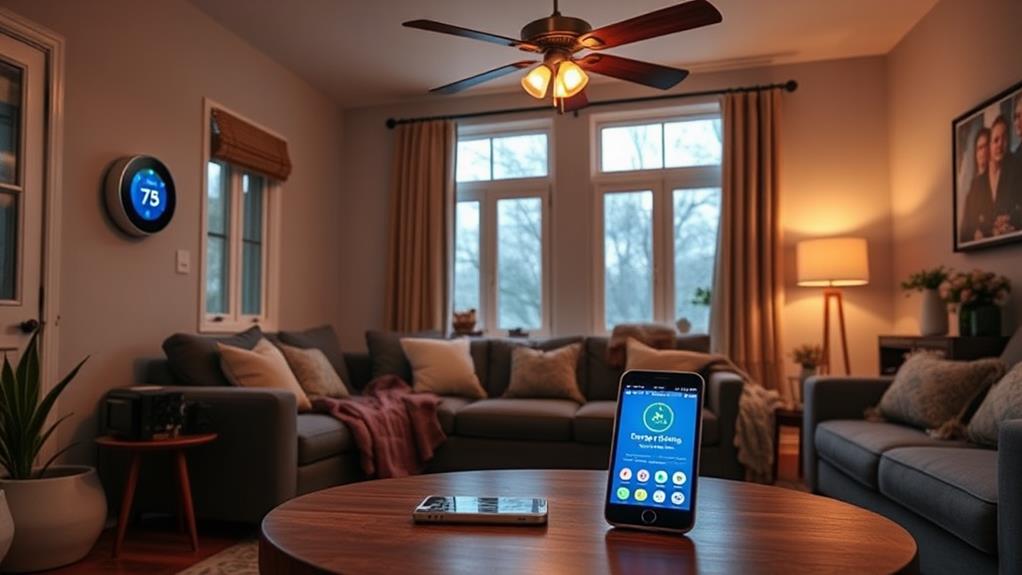
Maintaining optimal home temperature control often presents a significant challenge for budget-conscious homeowners. However, several cost-effective solutions can help achieve energy efficiency without breaking the bank. Programmable thermostats offer an affordable entry point, allowing users to set temperature schedules that align with their daily routines. These devices can significantly reduce energy consumption by automatically adjusting temperatures when occupants are asleep or away.
For those seeking more advanced options, smart thermostats provide additional features while remaining relatively affordable. These devices learn from user behavior and can be controlled remotely via smartphone apps. Some models even integrate with other smart home devices for seamless automation.
Supplementing these thermostat upgrades with low-cost efficiency measures can further enhance temperature control. Installing weatherstripping around doors and windows, using thermal curtains, and adding insulation to attics and walls are inexpensive yet effective ways to improve home comfort. Additionally, strategically placed ceiling fans can help distribute air more evenly, reducing the workload on heating and cooling systems. By combining these thrifty options, homeowners can create a comfortable, energy-efficient environment without incurring substantial costs.
Low-Cost Home Security Systems
While optimizing temperature control is important for comfort and energy efficiency, ensuring home security is equally vital for peace of mind. Fortunately, there are several budget-friendly options available for homeowners seeking to enhance their property's safety without breaking the bank.
One cost-effective solution is to invest in smart doorbell cameras, which offer real-time video monitoring and two-way communication capabilities. These devices can be easily installed and connected to smartphones, allowing users to monitor their entryways remotely.
Another affordable option is to install wireless motion sensor alarms on windows and doors, which can alert homeowners to potential intrusions.
For those seeking a more comprehensive approach, DIY security kits are available at reasonable prices. These typically include a central hub, door and window sensors, and motion detectors. Some kits also offer professional monitoring services for an additional monthly fee. Additionally, smart lighting systems with programmable schedules can create the illusion of occupancy when homeowners are away, deterring potential burglars.
Lastly, consider reinforcing entry points with inexpensive yet effective measures such as door jammers, window locks, and security films for glass surfaces. These simple upgrades can significantly enhance home security without requiring a substantial financial investment.
Repurposing Existing Devices
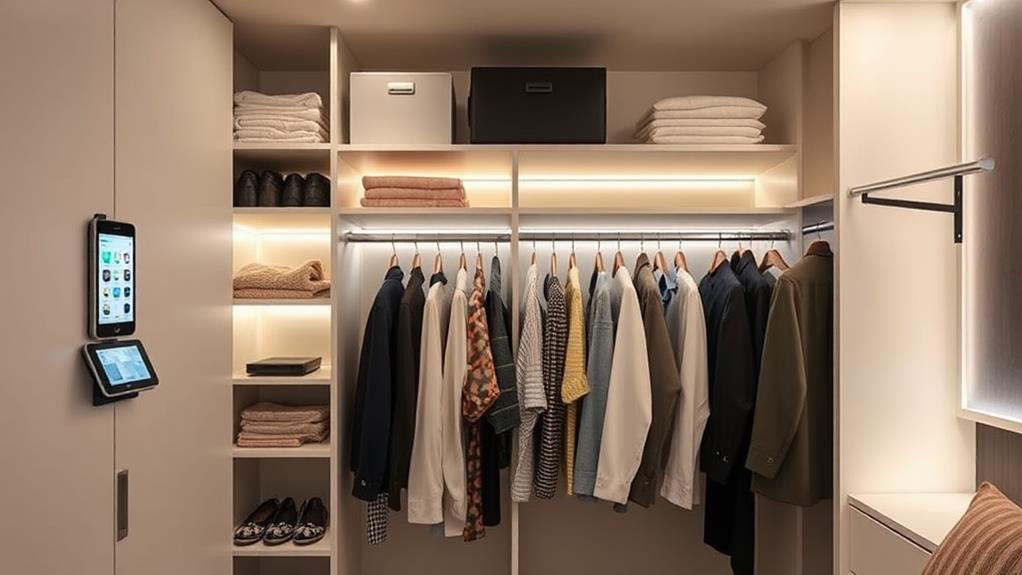
Transforming existing devices into smart home components can be a cost-effective way to enhance your living space without purchasing new equipment. Many older smartphones and tablets can be repurposed as smart home controllers, security cameras, or digital assistants. By installing appropriate apps, these devices can monitor your home, control smart appliances, or serve as intercom systems.
Outdated laptops can be converted into media servers or smart displays, providing centralized storage for digital content or acting as information hubs in common areas. Even old routers can be reprogrammed with custom firmware to extend your network's capabilities or create guest networks.
Standard appliances can also be made "smart" with plug-in modules or DIY modifications. For example, a regular coffee maker can be connected to a smart plug, allowing for remote activation and scheduling. Similarly, conventional light fixtures can be upgraded with smart bulbs or switches, integrating them into your home automation system.
DIY Smart Home Projects
For homeowners seeking to enhance their living spaces without breaking the bank, DIY smart home projects offer an excellent solution. These projects allow individuals to create custom smart home features tailored to their specific needs and preferences while keeping costs low.
One popular DIY project is creating a voice-controlled smart mirror using a Raspberry Pi, two-way mirror, and display. This multifunctional device can show weather forecasts, news updates, and calendar events.
Another cost-effective option is building a smart thermostat using an Arduino board, temperature sensors, and relays, enabling precise climate control and energy savings.
For improved home security, DIY enthusiasts can construct a smart doorbell camera using a Raspberry Pi, camera module, and motion sensor. This setup provides real-time video monitoring and alerts when visitors approach. Additionally, creating automated blinds or curtains using motors and microcontrollers offers convenience and energy efficiency.
Smart lighting can be achieved by retrofitting existing fixtures with ESP8266 Wi-Fi modules and relays, allowing for remote control and scheduling. Lastly, building a custom smart home hub using open-source software like Home Assistant enables centralized control of various DIY and commercial smart devices, creating a cohesive and personalized smart home ecosystem.
Energy-Saving Smart Plugs
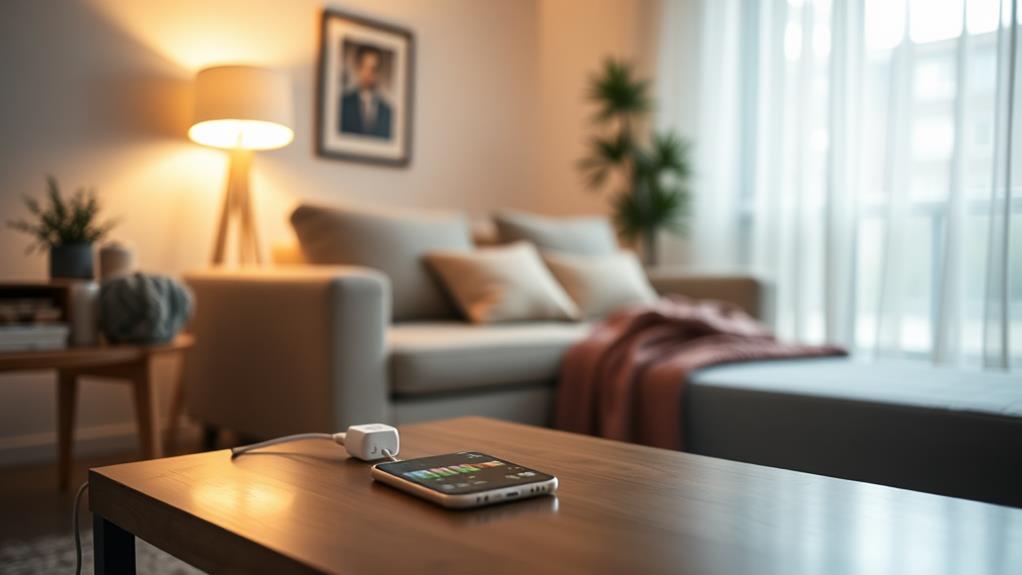
Energy-saving smart plugs represent a cost-effective entry point into home automation and energy management. These devices allow users to control and monitor power consumption of individual appliances remotely, often through smartphone apps. By scheduling device usage and cutting off standby power, smart plugs can significantly reduce electricity waste and lower utility bills.
Most smart plugs are compatible with popular voice assistants like Amazon Alexa and Google Home, enabling hands-free control of connected devices. Some models offer additional features such as energy monitoring, which provides detailed insights into power consumption patterns. This data can help users identify energy-hungry appliances and adjust their usage accordingly.
When selecting smart plugs, consider factors like Wi-Fi connectivity, power capacity, and compatibility with your existing smart home ecosystem. Budget-friendly options from brands like TP-Link, Wyze, and Amazon often provide excellent value without sacrificing essential features. To maximize energy savings, focus on appliances that consume significant standby power, such as entertainment systems, computer setups, and kitchen appliances. By strategically deploying smart plugs throughout your home, you can achieve substantial energy savings while enhancing convenience and control over your electronic devices.
Inexpensive Smart Home Hubs
Smart home hubs serve as the central nervous system for connected devices, enabling seamless integration and control of various smart home products. Fortunately, several affordable options exist for budget-conscious consumers looking to centralize their smart home operations.
One popular choice is the Amazon Echo Dot, which doubles as a smart speaker and hub. It supports a wide range of third-party devices and offers voice control through Alexa.
Google's Nest Mini provides similar functionality at a comparable price point, utilizing Google Assistant for voice commands.
For those preferring a dedicated hub without speaker functionality, the Samsung SmartThings Hub offers extensive compatibility with various protocols, including Zigbee and Z-Wave. The Hubitat Elevation is another cost-effective option, providing local processing for enhanced privacy and faster response times.
Open-source alternatives like Home Assistant can be installed on inexpensive hardware like Raspberry Pi, offering advanced customization options for tech-savvy users. Additionally, some smart home ecosystems, such as Apple's HomeKit, can utilize existing devices like iPads or Apple TVs as hubs, eliminating the need for additional hardware purchases.
When selecting a hub, consider device compatibility, ease of use, and future expandability to ensure it meets your current and potential smart home needs.
Cost-Effective Entertainment Upgrades
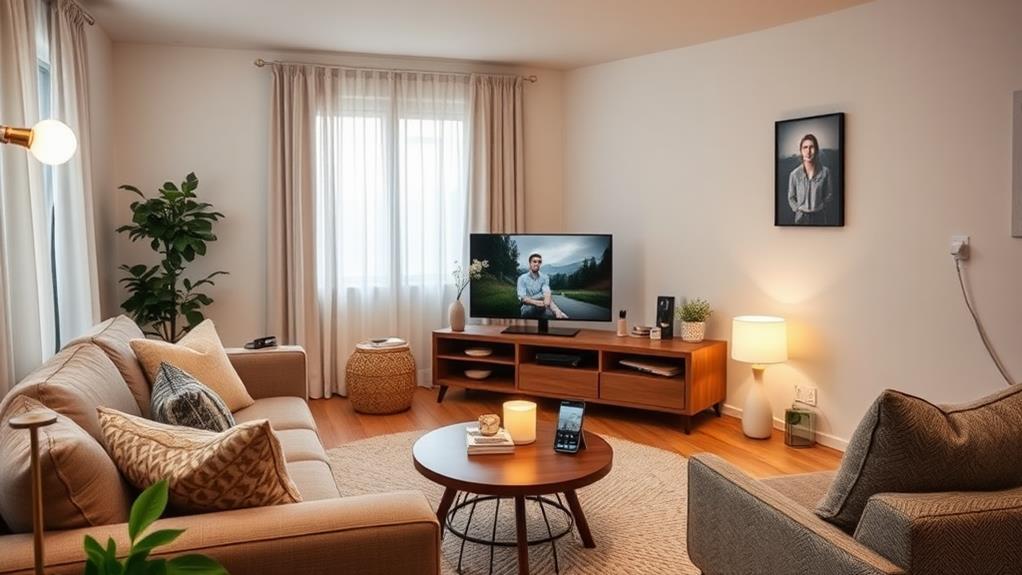
Moving from centralized control to enhanced enjoyment, cost-effective entertainment upgrades can significantly improve your home experience without breaking the bank. One affordable option is to invest in a streaming device like Roku or Amazon Fire Stick, which can transform any TV into a smart entertainment center. These devices offer access to numerous streaming services and free content, often at a fraction of the cost of cable subscriptions.
Another budget-friendly upgrade is a compact soundbar, which can dramatically improve audio quality for movies, music, and gaming. Many affordable models include Bluetooth connectivity, allowing seamless integration with smartphones and tablets. For music enthusiasts, a smart speaker like the Amazon Echo Dot or Google Nest Mini provides voice-controlled access to vast music libraries and can double as a smart home hub.
Consider adding bias lighting behind your TV or computer monitor to reduce eye strain and enhance visual contrast. This simple LED strip upgrade is inexpensive yet effective. Lastly, explore digital gaming options like retro game emulators or subscription services like Xbox Game Pass, which offer extensive libraries of games at reasonable prices, eliminating the need for costly individual game purchases.
Frequently Asked Questions
How Can I Ensure My Smart Home Devices Are Secure From Hackers?
To secure smart home devices from hackers, regularly update firmware, use strong, unique passwords, enable two-factor authentication, segment your network, disable unused features, and research device security before purchasing. Regularly monitor device activity and consider using a virtual private network (VPN).
Are There Any Privacy Concerns With Using Voice Assistants in My Home?
Imagine a friendly yet talkative house guest who never leaves. Voice assistants, like this guest, raise privacy concerns. They constantly listen, potentially recording personal conversations and data. Users should review privacy settings and consider selective use to mitigate risks.
Can Smart Home Devices Increase the Resale Value of My House?
Smart home devices can potentially increase your house's resale value. Modern buyers often appreciate integrated technology, energy efficiency, and convenience. However, the impact varies based on the specific upgrades, market conditions, and buyer preferences in your area.
How Much Can I Expect to Save on Energy Bills With Smart Upgrades?
Energy savings from smart upgrades can vary, but homeowners typically report 10-30% reduction in utility bills. Smart thermostats, LED lighting, and energy monitoring systems offer the most significant savings. Actual results depend on usage patterns and existing efficiency levels.
Are Smart Home Devices Compatible With Older Homes and Electrical Systems?
Smart home devices are generally compatible with older homes and electrical systems. However, some modifications may be necessary, such as updating wiring or installing smart switches. It's advisable to consult with an electrician for a thorough assessment of your home's compatibility.
Conclusion
In conclusion, transforming a home into a smart haven need not break the bank. By judiciously selecting affordable voice assistants, budget-friendly lighting, and thrifty temperature control options, homeowners can achieve a technological revolution without astronomical costs. DIY projects and repurposing existing devices offer additional savings. With careful planning and implementation of cost-effective solutions, even the most modest dwelling can metamorphose into an intelligent, efficient living space, proving that smart home technology is no longer the exclusive domain of the affluent.

